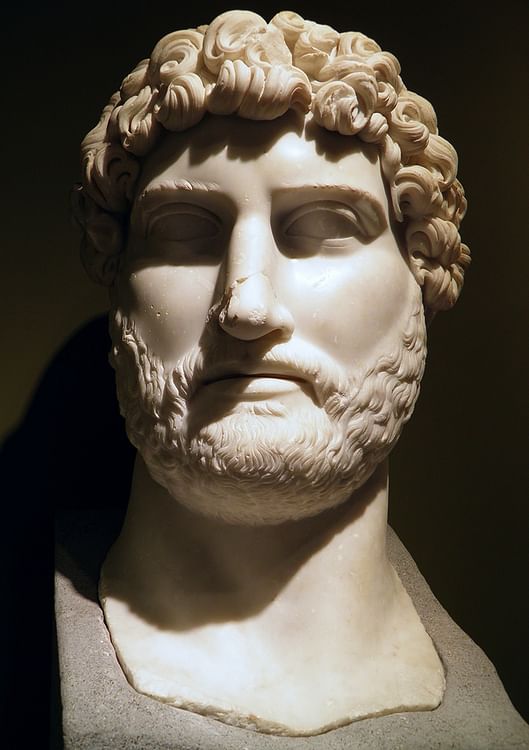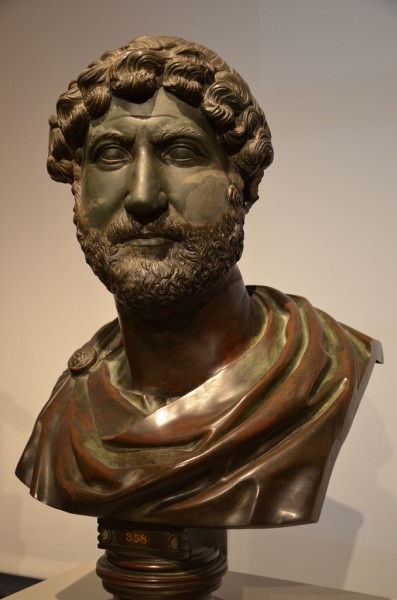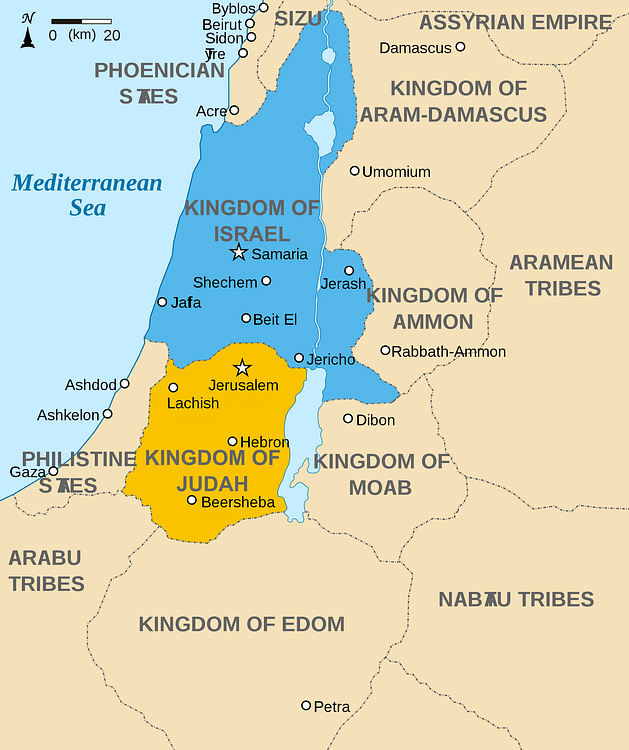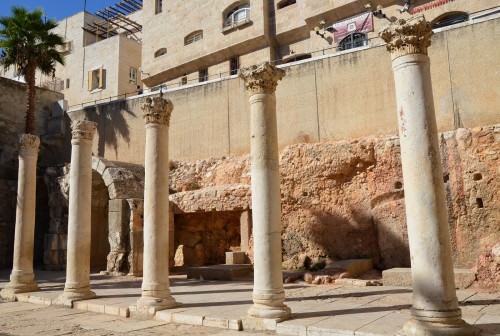Aelia Capitolina › Hadrian › Jerusalem » Ancient origins
Articles and Definitions › Contents
- Aelia Capitolina › Antique Origins
- Hadrian › Who Was
- Jerusalem › Ancient History
Ancient civilizations › Historical and archaeological sites
Aelia Capitolina › Antique Origins
ANCIENT CITY, ASIA
Aelia Capitolina, city founded in AD 135 by the Romans on the ruins of Jerusalem, which their forces, under Titus, had destroyed in AD 70. The name was given, after the Second Jewish Revolt (132–135), in honour of the emperor Hadrian (whose nomen, or clan name, was Aelius) as well as the deities of the Capitoline Triad (Jupiter, Juno, and Minerva). A sanctuary to Jupiter was built on the Temple Mount, and statues of Roman deities were erected in the city, in intentional violation of Old Testament law. The area was walled and a large foreign population imported; Jews were generally forbidden entrance to the city. The present walls of the Old City of Jerusalem follow the layout of the Roman walls. The name was used until Christianity became the official religion of the Roman Empire in the 4th century.Hadrian › Who Was
Definition and Origins

Hadrian was Roman emperor from 117 to 138 CE and he is known as the third of the Five Good Emperors ( Nerva, Trajan, Hadrian, Antoninus Pius, and Marcus Aurelius ) who ruled justly. Born Publius Aelius Hadrianus, probably in Hispania, Hadrian is best known for his substantial building projects throughout the Roman Empire and, especially, Hadrian's Wall in northern Britain.
EARLY LIFE
As a young man, Hadrian was well educated in his hometown of Italica Hispania (modern day Seville, Spain) and left for Romearound the age of 14. His first military service was as Tribune under Emperor Nerva. When Nerva died, Trajan ascended to the throne. Emperor Trajan was the first Roman ruler of provincial origin. Later biographers would attempt to place the birth of both Trajan and Hadrian in the city of Rome but both were of Hispanic ethnicity and this commonality has been assumed by some to be the reason for Trajan's adoption of Hadrian as his successor (though most scholars dispute this). Trajan died on campaign in Cilicia in 117 CE, with Hadrian in command of his rear guard, and is not believed to have named a successor.Trajan's wife, Plotina (who was fond of Hadrian) signed the papers of succession and it is thought that she, not the emperor, was responsible for Hadrian's adoption as heir. However that may be, it is known that Trajan respected Hadrian and had considered him as his successor even if he did not officially name him as such. Hadrian's service to Trajan is well documented through the various important positions he held prior to becoming emperor of Rome.
HADRIAN IS COMMONLY DEPICTED IN MILITARY ATTIRE EVEN THOUGH HIS REGIME IS MARKED BY RELATIVE PEACE.
HADRIAN AS EMPEROR
His popularity as emperor is attested to by the fact that Hadrian was absent from Rome for the better part of his reign. Earlier Roman rulers, such as Nero, were harshly criticized for spending less time away from the city. Professor D. Brendan Nagle writes that Hadrian “spent most of his reign (twelve out of twenty-one years) traveling all over the Empire visiting the provinces, overseeing the administration, and checking the discipline of the army. He was a brilliant administrator who concerned himself with all aspects of government and the administration of justice” (278). His devotion to the army was such that he would sleep and eat among the common soldiers and he is commonly depicted in military attire even though his regime is marked by relative peace.
Hadrian's building projects are perhaps his most enduring legacy. He established cities throughout the Balkan Peninsula, Egypt, Asia Minor, and Greece. His love for Greece and Greek literature was such that he was known as `Graeculus' (Greekling) in his youth and his philhellenism did not dissipate with age. He visited Greece at least twice (probably more) and participated in the Eleusinian Mysteries, of which he was an initiate. The Arch of Hadrian, constructed by the citizens of Athens in 131/132 CE, honor Hadrian as the founder of the city. Inscriptions on the arch name Theseus (the traditional founder) but add Hadrian owing to the latter's substantial contributions to Athens (such as the Temple of Zeus ). He dedicated a number of sites in Greece to his young lover Antinous, who drowned in the Nile River in 130 CE. Hadrian was deeply attached to Antinous and the young man's death so greatly affected the emperor that he had him deified (from which the mystery cult in honor of Antinous grew). In Egypt he founded the city of Antinopolis in his memory. In Rome he rebuilt the Pantheon (which had been destroyed by fire) and Trajan's Forum as well as funding construction of other buildings, baths, and villas. Many of these structures survived intact for centuries, some as late as the 19th century CE, and the Pantheon, still perfectly preserved, may be visited in the present day. Hadrian had a great interest in architecture and seems to have contributed ideas, or even plans, to the architects though scholars no longer believe that he was the lead architect on any single project.

Hadrian
HADRIAN'S WALL
Of all his significant monuments and buildings, Hadrian's Wall in north Britain is the most famous. Construction of the wall, known in antiquity as Vallum Hadriani, was begun around 122 CE and corresponded to Hadrian's visit to the province. It marked the northern boundary of the Roman Empire in Britain but the length and breadth of the project (stretching, as it did, from coast to coast) suggests that the more important purpose of the wall was a show of Rome's power. The wall was originally 9.7 feet wide (3 metres) and 16-20 feet high (six metres) east of the River Irthing, all built of stone, and 20 feet wide (6 metres) by 11.feet high (3.5 metres) west of the river, made up of stone and turf, stretching 73 miles (120 km) across uneven terrain. It was built in six years by the legions stationed in Britain. There were between 14-17 fortifications along the length of the wall and a Vallum (a ditch purposefully constructed of earthworks) which ran parallel to the wall. The Vallum measured 20 feet (6 metres) wide by 10 feet (3 metres) deep flanked by large mounds of tightly packed earth. As Hadrian's foreign policy was “peace through strength” it is thought that the wall, which was originally plastered and white washed, would have clearly represented the might of the Roman Empire.
JERUSALEM
Although Hadrian was a learned and cultivated man, his policy of peaceful relations and negotiations was not always adhered to. In 130 CE, Hadrian visited Jerusalem, which was still in ruins from the First Roman-Jewish War of 66-73 CE. He rebuilt the city according to his own designs and renamed it Aelia Capitolina Jupiter Capitolinus after himself and the king of the Roman gods. When he built a temple to Jupiter on the ruins of the Temple of Solomon (the so-called Second Temple, considered sacred by the Jews), the populace rose up under the leadership of Simon bar Kokhbah in what has come to be known as bar Kokhbah's Revolt (132-136 CE). Roman losses in this campaign were enormous but Jewish losses were no less significant. By the time the rebellion was put down, 580,000 Jews had been killed and over 1000 towns and villages destroyed. Hadrian then banished the remaining Jews from the region and renamed it Syria Palaestina after the traditional enemies of the Jewish people, the Philistines. He ordered a public burning of the Torah, executed the Jewish scholars, and prohibited the practice and observance of Judaism.

Hadrian in Military Armour
DEATH & SUCCESSOR
His health now failing, Hadrian returned to Rome and occupied himself by writing poetry and tending to administrative affairs.He named as his successor Antoninus Pius on the stipulation that Antoninus would adopt the young Marcus Aurelius to follow.Hadrian died in 138 CE, presumably of a heart attack, at the age of 62. He was buried first at Puteoli, on the grounds of the former estate of the Rhetorician Cicero (as homage to Hadrian's love of learning) but when Antoninus Pius completed the great Tomb of Hadrian in Rome the following year, his body was cremated and the ashes interred there with his wife and son.Antoninus Pius had Hadrian deified and temples built in his honor. The historian Gibbon writes that Hadrian's rule was, “the period in the history of the world during which the condition of the human race was most happy and prosperous…when the vast extent of the Roman Empire was governed by absolute power under the guidance of virtue and wisdom” (61). Although Hadrian was not universally admired during his life, or since his death, his reign is generally considered in keeping with Gibbon's estimation.
Jerusalem › Ancient History
Definition and Origins

Jerusalem is an ancient city located in ancient Judah that is now the capital of Israel. The city has a history that goes back to the 4th millennium BCE, making it one of the oldest cities in the world. It is the holiest city in Judaism and Christianity and has been the spiritual center of the Jewish people since c. 1000 BCE, when David the King of Israel first established it as the capital of the Jewish Nation, and his son Solomon commissioned the building of the First Temple in the city.
Ceramic evidence indicates the occupation of Ophel, within present-day Jerusalem, as far back as the Copper Age, c. 4th millennium BCE, with evidence of a permanent settlement during the early Bronze Age, c. 3000–2800 BCE. The Execration Texts (c. 19th century BCE), which refer to a city called Roshlamem or Rosh-ramen and the Amarna letters (c. 14th century BCE) may be the earliest mention of the city. According to Jewish tradition the city was founded by Shem and Eber, ancestors of Abraham. In the biblical account, when first mentioned, Jerusalem (known as "Salem") is ruled by Melchizedek, an ally of Abraham (identified with Shem in legend). Later, in the time of Joshua, Jerusalem was in territory allocated to the tribe of Benjamin (Joshua 18:28) but it continued to be under the independent control of the Jebusites until it was conquered by David and made into the capital of the united Kingdom of Israel (c. 1000s BCE).
According to Hebrew scripture, King David reigned until 970 BCE. He was succeeded by his son Solomon, who built the Holy Temple on Mount Moriah. During the so-called First Temple Period, Jerusalem was the political capital of firstly the united Kingdom of Israel and then the Kingdom of Judah and the Temple was the religious center of the Israelites. The First Temple period ended around 586 BCE, as the Babylonian ruler Nebuchadnezzar II laid waste to Solomon's Temple and took a significant number of Jews captive in response to a revolt. In 538 BCE, after fifty years of Babylonian captivity, Persian King Cyrus the Great invited the Jews to return to Judah to rebuild the Temple. Construction of the Second Temple was completed in 516 BCE, during the reign of Darius the Great, seventy years after the destruction of the First Temple.
When Macedonian ruler Alexander the Great conquered the Persian Empire, Jerusalem and Judea fell under Macedonian control, eventually falling to the Ptolemaic dynasty under Ptolemy I. In 198 BCE, Ptolemy V lost Jerusalem and Judea to the Seleucids under Antiochus III. The Seleucid attempt to recast Jerusalem as a Hellenized polis came to a head in 168 BCE with the successful Maccabean revolt of Mattathias the High Priest and his five sons against Antiochus Epiphanes, and their establishment of the Hasmonean Kingdom in 152 BCE with Jerusalem again as its capital.
As Rome became stronger it installed Herod as a Jewish client king. Herod the Great, as he was known, devoted himself to developing and beautifying the city. He built walls, towers and palaces, and expanded the Temple Mount, buttressing the courtyard with blocks of stone weighing up to 100 tons. Under Herod, the area of the Temple Mount doubled in size. In 6 CE, the city, as well as much of the surrounding area, came under direct Roman rule as the Iudaea Province and Herod's descendants through Agrippa II remained client kings of Judea until 96 CE. Emperor Hadrian romanized the city, renaming it Aelia Capitolina and banned the Jews from entering it. Hadrian renamed the entire Iudaea Province Syria Palaestina after the biblical Philistines in an attempt to de-Judaize the country. Enforcement of the ban on Jews entering Aelia Capitolina continued until the 4th century CE.

Reconstructed section of the Cardo Maximus of Aelia Capitolina (Jerusalem)
Until the 7th century CE the city repeatedly changed hands between the Roman Empire, the Byzantine Empire, and the Sassanid Empire. In 638 the Islamic Caliphate extended its dominion to Jerusalem, which is considered Islam's third holiest city after Mecca and Medina. With the Arab conquest, Jews were allowed back into the city. Until the Crusades Jerusalem remained under Arab control.
MAP
LICENSE:
Article based on information obtained from these sources:with permission from the Website Ancient History Encyclopedia
Content is available under License Creative Commons: Attribution-NonCommercial-ShareAlike 3.0 Unported. CC-BY-NC-SA License